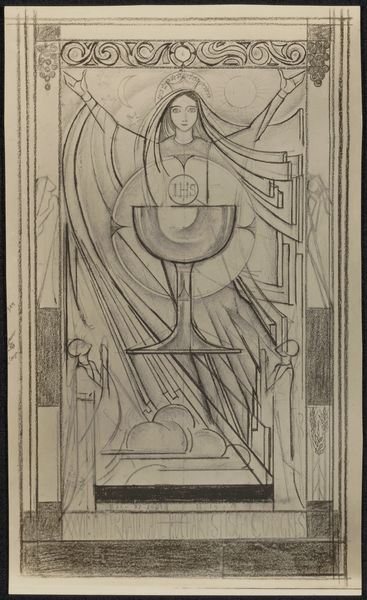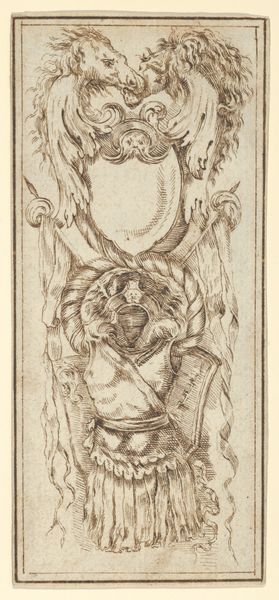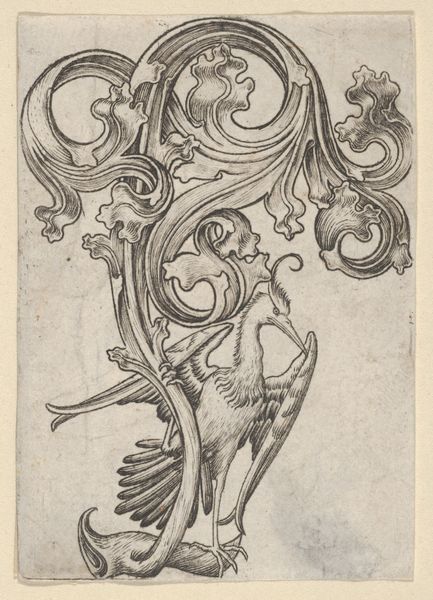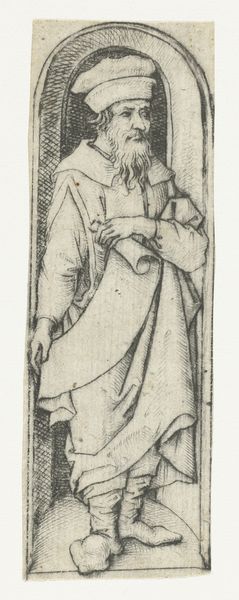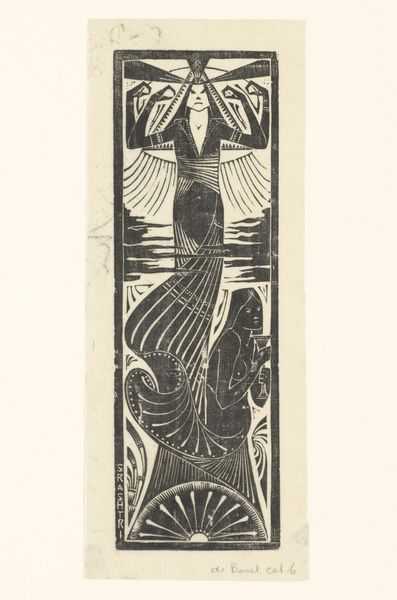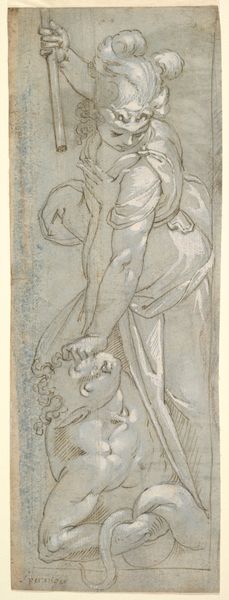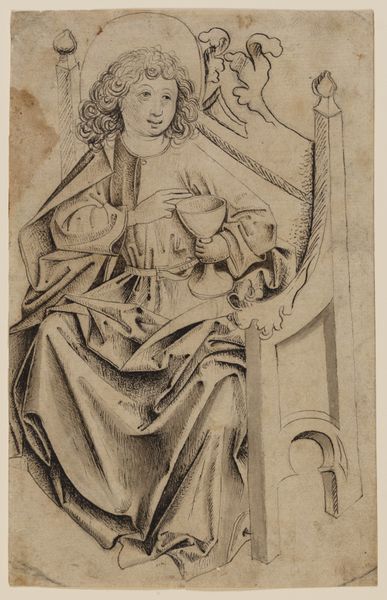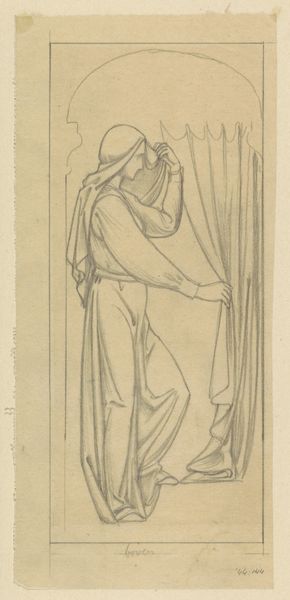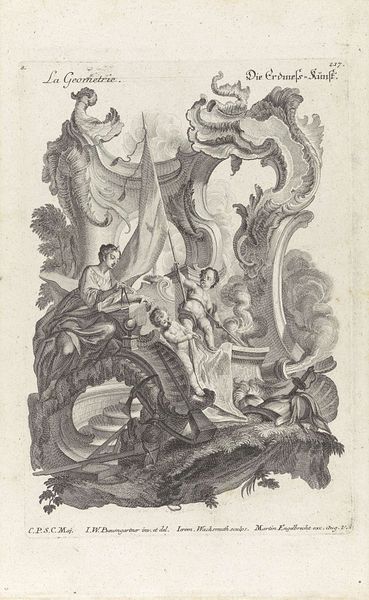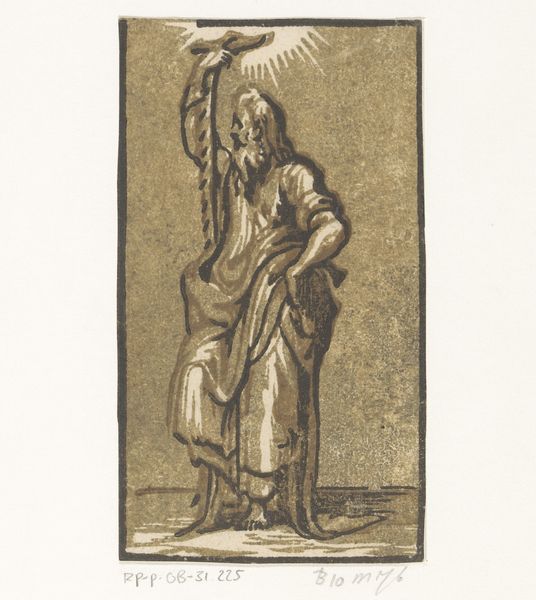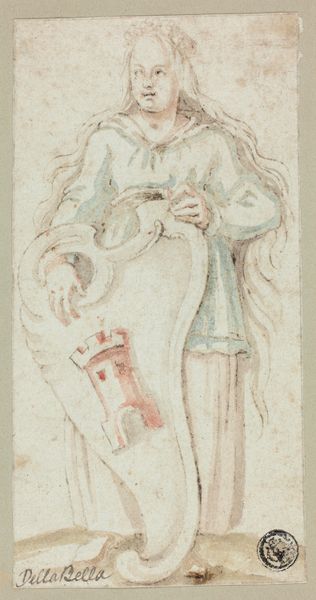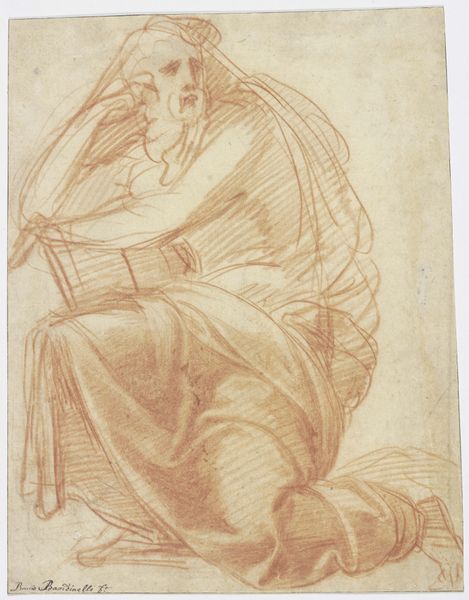
Engel. Fragmenten karton voor het glasraam in de westgevel van Joris van Egmond (Bisschop van Utrecht 1535-1559) voor de Sint Bavo Kerk te Haarlem 1541
0:00
0:00
drawing, paper, ink, pen
#
drawing
#
aged paper
#
toned paper
#
allegory
#
pencil sketch
#
sketch book
#
figuration
#
paper
#
11_renaissance
#
personal sketchbook
#
ink
#
pen and pencil
#
sketchbook drawing
#
pen
#
watercolour illustration
#
history-painting
#
storyboard and sketchbook work
#
sketchbook art
Dimensions: height 12035 mm, width 580 mm, height 3710 mm, height 76 cm, width 27 cm, depth 27 cm
Copyright: Rijks Museum: Open Domain
Curator: This intriguing sketch, "Engel. Fragmenten karton voor het glasraam…" by Gerrit Boels from 1541, is rendered with pen, ink, and pencil on paper. It feels rather fragile, doesn't it? Editor: It does. I'm drawn to how preliminary it seems. It's clearly a study for something grander, probably a stained-glass window, given the title. I wonder what we can glean from studying it in isolation, as a material object and document of the production process itself? Curator: Excellent question. Considering a materialist perspective, it is productive to examine the artistic labour behind the image. Look at the materials used – paper, ink, pencil. Were they easily accessible at the time? How might the cost and availability of materials influenced the artist’s process and design choices? The paper looks toned; could the artist afford the production cost of superior quality materials? Editor: So, it’s less about the angelic figure itself, or even the religious symbolism, and more about… the economic conditions of artistic production. Curator: Precisely. Also, think about how this drawing functioned as a template. Its purpose was inherently tied to its reproducibility on a much larger scale, likely involving different craftsmen for glass production. The drawing becomes almost a form of artistic instruction manual. Editor: That makes sense. It emphasizes how "high art" like stained glass relied on workshops and skilled labour, and was intertwined with various levels of craft production. Curator: Consider, too, that this "fragment" provides tangible insight into Renaissance-era labour divisions within the visual art industry. Editor: Fascinating! I didn't realize there was so much hidden within the artwork that the material and the process could unlock. Curator: Understanding the historical means of production enriches our understanding of not just the artwork but of the art market of the 16th century too.
Comments
No comments
Be the first to comment and join the conversation on the ultimate creative platform.
